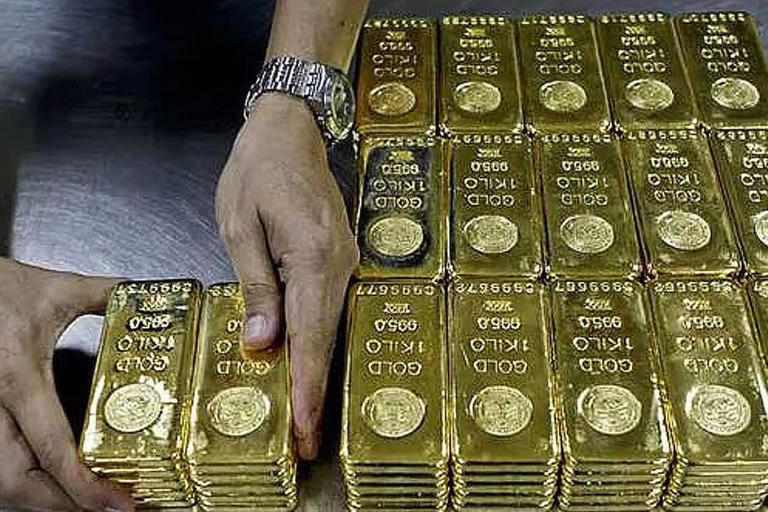The value of gold has once again surged to an all-time high, following the recent announcement from the US Federal Reserve (Fed), sparking discussions and interest in the precious metal.
During the Federal Open Market Committee meeting on the 20th, the Fed decided to maintain the interest rate steady at an annual range of 5.25% to 5.50%. This decision marks the fifth consecutive time the Fed has opted to freeze interest rates since September of the previous year. The Fed’s stance is to keep rates stable until it gains confidence that inflation is moving sustainably towards its target of 2%, given the uncertain economic outlook and persistently high inflation.
With the Fed predicting an end-of-year inflation rate of 2.4% and projecting a median interest rate of 4.6% for the next year, experts interpret this as a potential decrease of 0.75% in the benchmark interest rate. The prospect of multiple rate cuts, typically in 0.25% increments, has fueled the recent surge in gold prices.
As of the morning of the 21st, gold futures for April delivery on the New York Mercantile Exchange (COMEX) were trading at over $2,205 per ounce, reflecting a more than 2% increase from the previous day. Spot gold had already reached $2,220 per ounce before the March Federal Open Market Committee meeting, signaling a strong upward trend in gold prices.
The surge in gold prices is further driven by increased buying activity from central banks worldwide, despite the challenging environment of high-interest rates and a strong dollar. China remains the top consumer of gold, both in terms of consumer demand and central bank purchases. Other countries, including Poland, have also significantly increased their gold purchases, with Poland emerging as the second-largest gold consumer globally in 2023.
Poland’s heightened demand for gold is attributed to its geographic proximity to regions experiencing conflict, such as Russia and Ukraine, leading to increased demand for safe-haven assets. Geopolitical uncertainty and the ongoing conflict between the US and China further contribute to the global demand for gold as a safe asset.
Central banks worldwide purchased significant amounts of gold in recent years and are expected to continue actively buying gold in the foreseeable future. However, South Korea stands out as an exception, reportedly not purchasing additional gold since 2013, leading to a decline in its ranking of gold holdings.
Overall, the increasing demand for gold, driven by both geopolitical tensions and central bank activity, is expected to continue supporting the upward trajectory of gold prices in the market.
